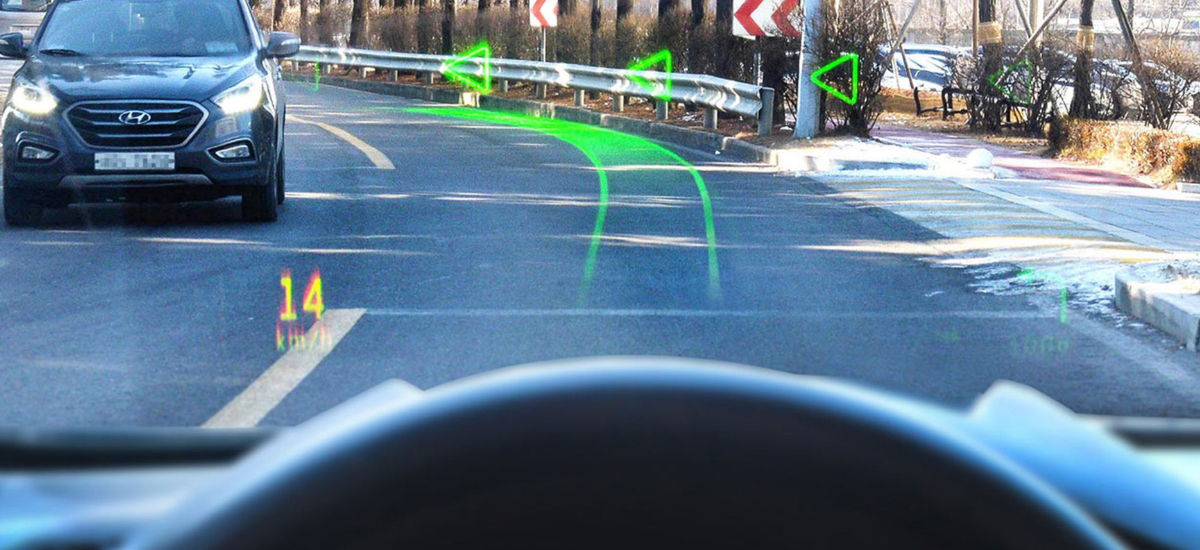
 Your Credit Estimate
Your Credit Estimate
 Your Credit
Your Credit
Your zip code helps us provide you with the most accurate vehicle pricing and vehicle availability.
We estimate your credit score to give you an idea of your monthly payments. To get an accurate payment amount, complete our credit application by clicking the Start Credit Application button below.
start credit application
The automotive world today is changing and evolving faster than ever. With hybrid and electric vehicles on the rise and self-driving ride-hailing networks operating around the world, it’s only a matter of time until we get flying cars. No really, have you seen the Airbus or the Blackfly? Personal flying vehicles is the next step, but before we make the transition to the airwaves (that’s a pun), we should figure out where we are while on the ground. At the beginning of the year, we saw a lot of artificial intelligence in January at the 2019 Consumer Electronics Show, and coming up in October 2019 is the Tokyo Motor Show, an auto show always looking towards the future of mobility. If these trends continue, what might the auto industry look like in five years, or ten?
Modern Day Vehicles
In the past few years, aside from the changes and revolutions made to the auto industry, there has also been a sort of boom in sales. On a global scale, there are more than 70 million passenger vehicles on the road today, and that only makes up a percentage of how many vehicles are currently operating around the world. In the United States alone, more than 90-percent of homeowners and families own at least one vehicle. Based on the latest info from the United States Census Bureau, there are over 320 million people in the U.S. (at the end of 2018) – how many do you think are of age to purchase and drive a vehicle?
As we mentioned above, the current growing trend in the auto market is alternative fuel and smart cars. Although the future of EVs and EV batteries seems uncertain, data suggests that electric vehicles will make up 23-percent of all automobile sales by the year 2025. More and more people are choosing to go green every day, and with more people driving alternative fuel vehicles, road-based pollution from carbon emissions will greatly reduce, helping to fight the battle against global warming. We’re also seeing many companies and automakers coming out with new advancements in electric vehicle performance. The Hyundai Motor Group even suggests a future where vehicles are powered by hydrogen fuel cells, and a solar-powered vehicle made in the Netherlands can get anywhere between 250 to 370 miles.
What’s Next?
Artificial intelligence and smart cars are slowly creeping into the auto industry. At the 2019 CES, Kia Motors debuted facial recognition technology that can monitor a driver’s mood and possibly state of health based on their Real-time Emotion Adaptive Driving (R.E.A.D.) system. Simultaneously, drivers can interact with their vehicles using finger movements and gestures through Kia Motors Virtual Touch. It seems futuristic, but they’re not the only automaker working towards this level of technology.
At the upcoming 2019 Tokyo Motor Show, Mitsubishi Motors will have two different self-driving vehicles on display, one of which should have an integrated human machine interface (HMI) that can help the driver avoid traffic incidents and projects data onto an augmented reality windshield. Think of a vehicle with a heads-up display that projects data like miles-per-hour onto the windshield, except now windshields will become a transparent screen with superimposed data, like the Pokemon Go app with camera phones. Within the coming years, over 70-percent of automakers intend to introduce some form of AI or AR into their vehicles with the ongoing competition.
Keeping consumers connected is also a growing trend. Consumers are connected to a number of devices at any time of day that opens a world of data and possibilities. Smart devices like Google Home and Amazon Alexa have become popular in personal homes in recent years and similar technology is starting to find its way into vehicle infotainment systems. Both of these devices are programmed with some level of artificial intelligence, and with an internet connection, they become a home virtual assistant. Recent data suggests that by 2020, 22-percent of all vehicles on the road will be able to connect to the internet via an infotainment system. If that were true, then it isn’t too far-fetched that smart devices and virtual assistants could start popping up in vehicles over the next few years.
Doubling back to the self-driving autonomous car race, every large automaker and automobile group is working on its own retail self-driving vehicle. With networks like Aptiv and Waymo One, robotaxis have given rise to the demand for personal ownership of self-driving vehicles. If we look at some serious projections of the future, some researchers and analysts predict that 70-percent of all new vehicles will have some form of self-driving or autonomous driving feature by 2030. If the evolution of technology has taught us anything, it’ll take less than a decade for highways to be predominantly occupied by driverless cars.
Really, we could go on and on about this, but Carsurance went above and beyond with a nifty infographic for those of us who prefer visuals.

What are your thoughts on the future of cars? Looking forward to self-driving vehicles, or holding out for your own personal helicopter? Join the discussion on NowCar social media. For more information about automobile insurance and the source of this infographic, please check out CarSurance.